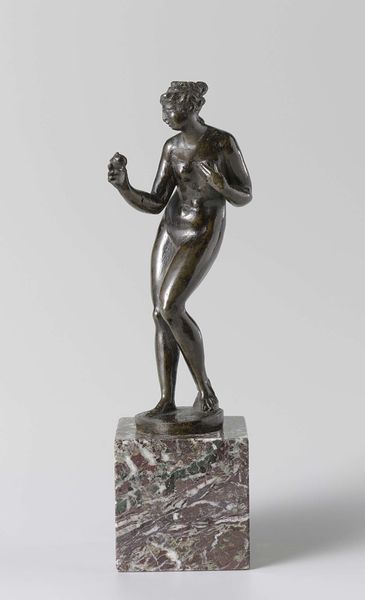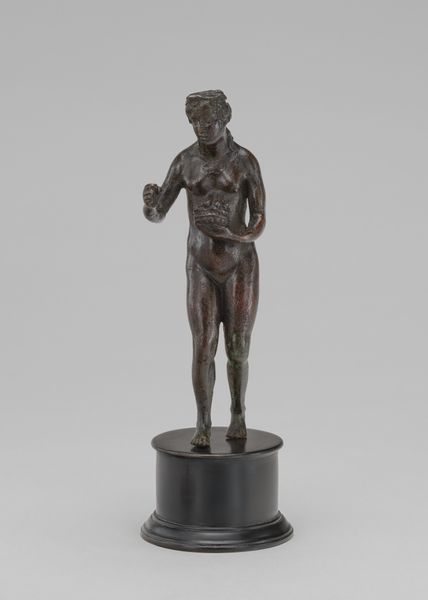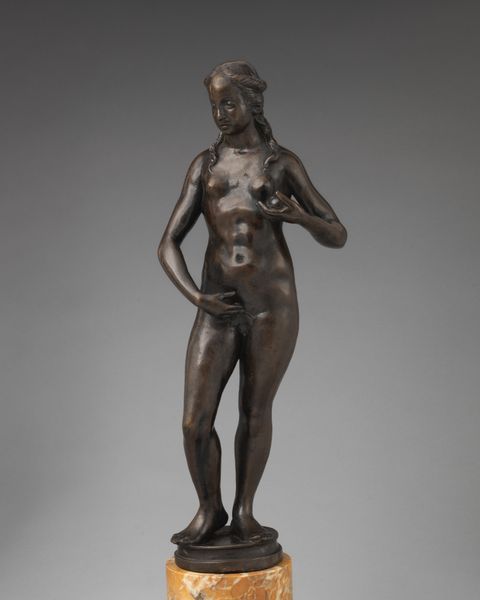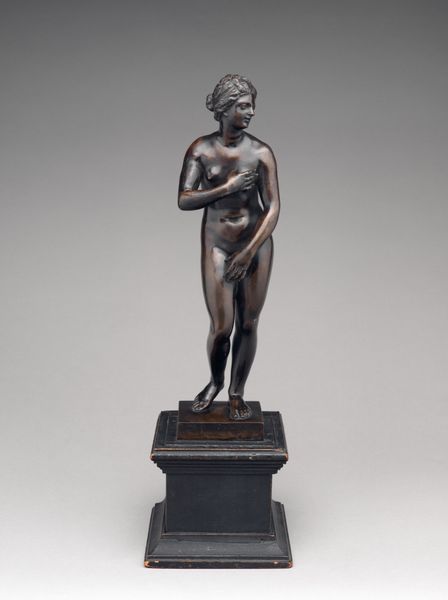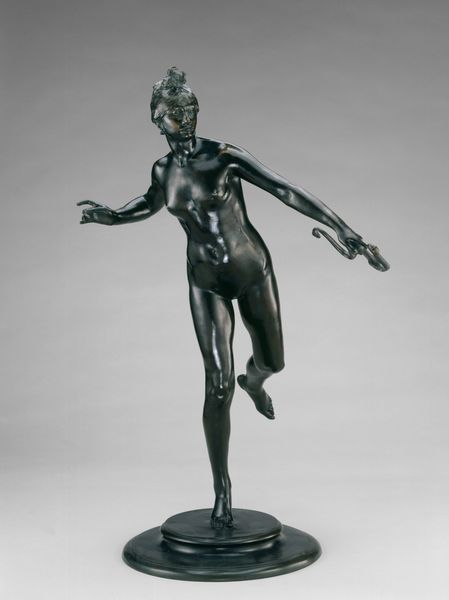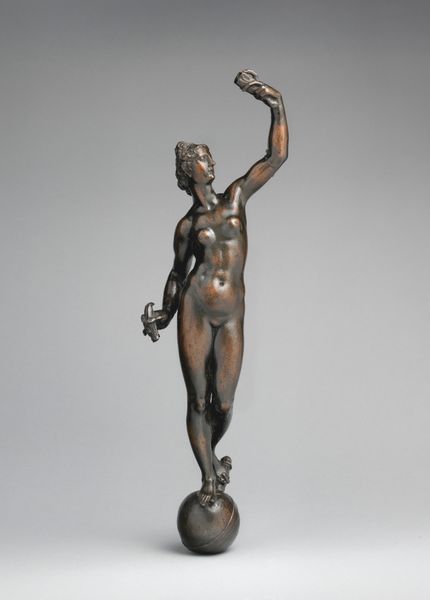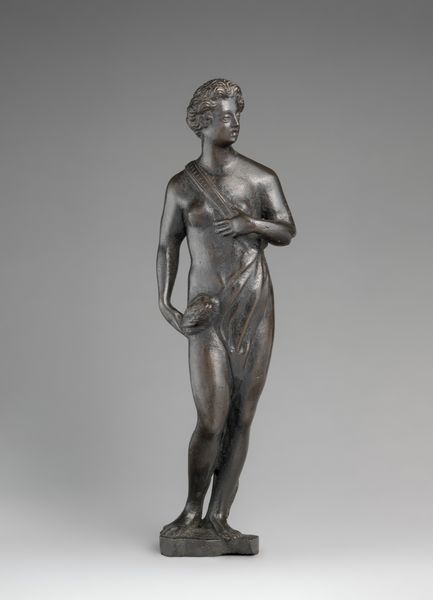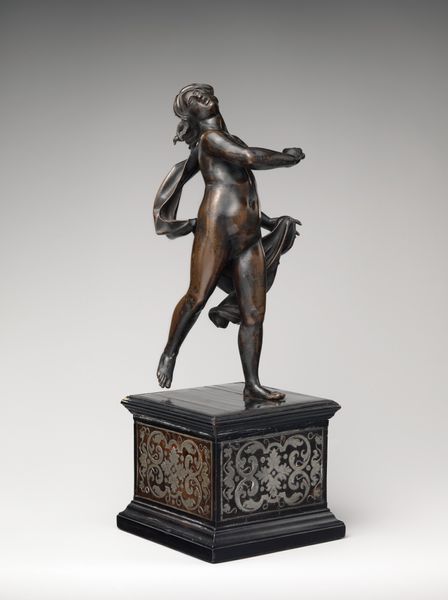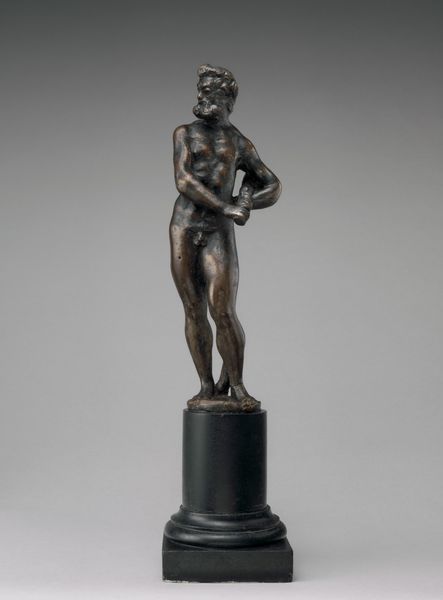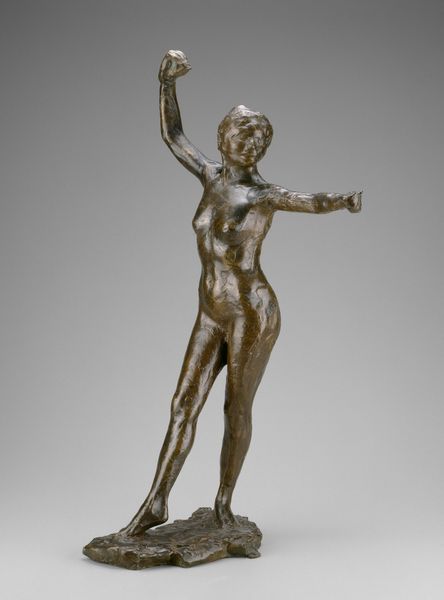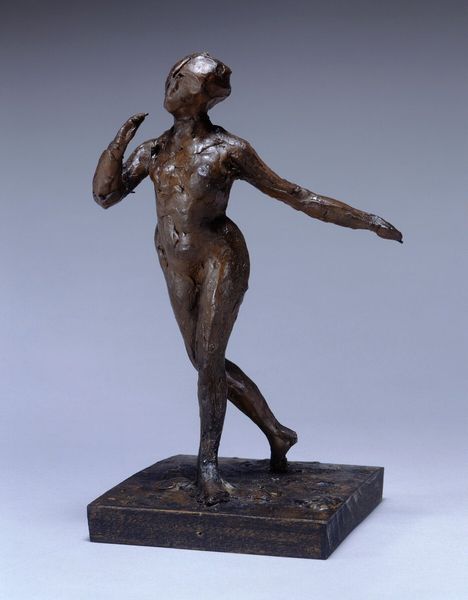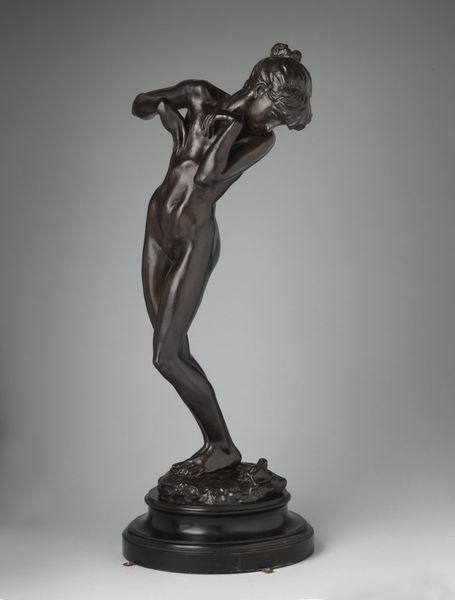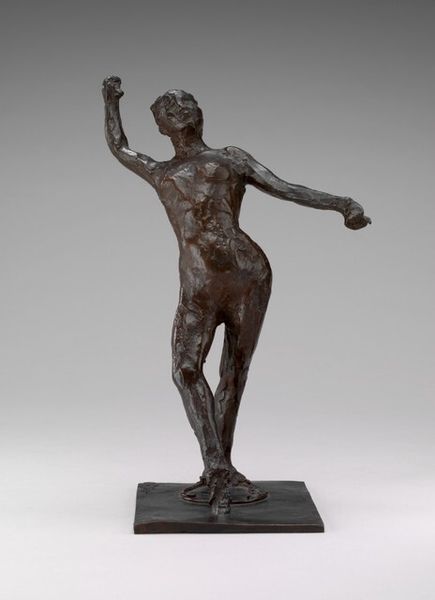
A Dancing Faun model c. 1515, cast possibly mid-16th century
0:00
0:00
bronze, sculpture
#
bronze
#
figuration
#
11_renaissance
#
sculpture
#
italian-renaissance
#
nude
Dimensions: overall: 15.2 x 8.4 cm (6 x 3 5/16 in.)
Copyright: National Gallery of Art: CC0 1.0
Editor: Here we have Giovanni Francesco Rustici's "A Dancing Faun," modeled around 1515, but cast a bit later. The figure is bronze, and there's a palpable sense of movement, despite the static material. The composition is compelling, it's like he's caught mid-leap. What do you see in this piece, focusing on its visual construction? Curator: The kinetic energy is certainly striking. Observe how the sculptor utilizes contrapposto; the weight is shifted dynamically, creating a spiraling effect through the torso. The drape of the cloth further emphasizes this diagonal tension. Notice the textural contrast: the smooth, polished skin against the roughly textured hair and fabric. Editor: That contrast definitely adds another layer of interest. But what about the missing arm? Does that detract from the overall visual impact? Curator: On the contrary, the absent limb highlights the dynamic potential within the form. It forces the viewer to complete the gesture in their mind, engaging us actively in the composition. The negative space becomes as crucial as the solid form itself, and shifts focus toward movement, rather than realistic detail. Editor: I see what you mean! By focusing on these elements, like the contrast and negative space, we get a richer understanding beyond just what it represents. It changes how you perceive the form. Curator: Precisely! Analyzing these formal aspects unveils the artist's intentional manipulation of the medium to evoke a particular sensation – a vibrant energy captured in a static object. Editor: Well, looking at this sculpture with these concepts of movement and negative space makes it even more powerful. It’s great to explore a piece beyond its mere appearance. Curator: Indeed. Appreciating art's formal qualities unlocks a deeper engagement with its intended aesthetic effect.
Comments
No comments
Be the first to comment and join the conversation on the ultimate creative platform.

